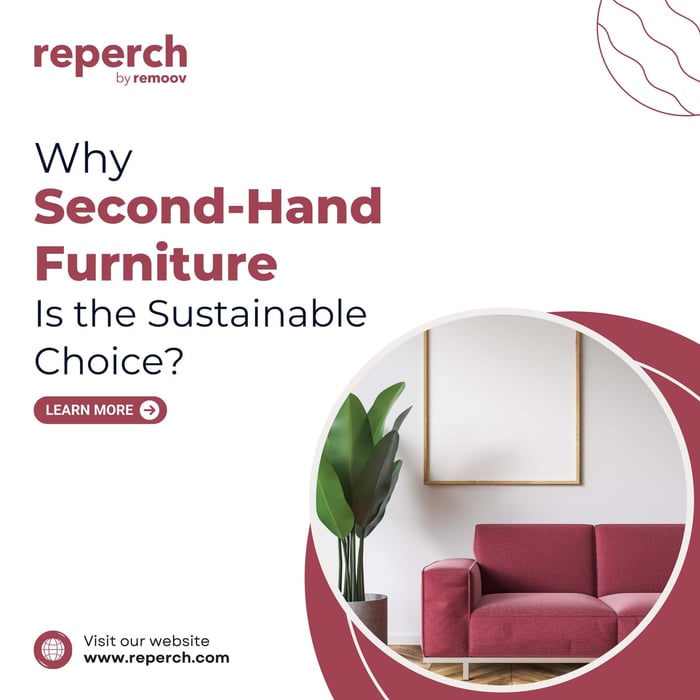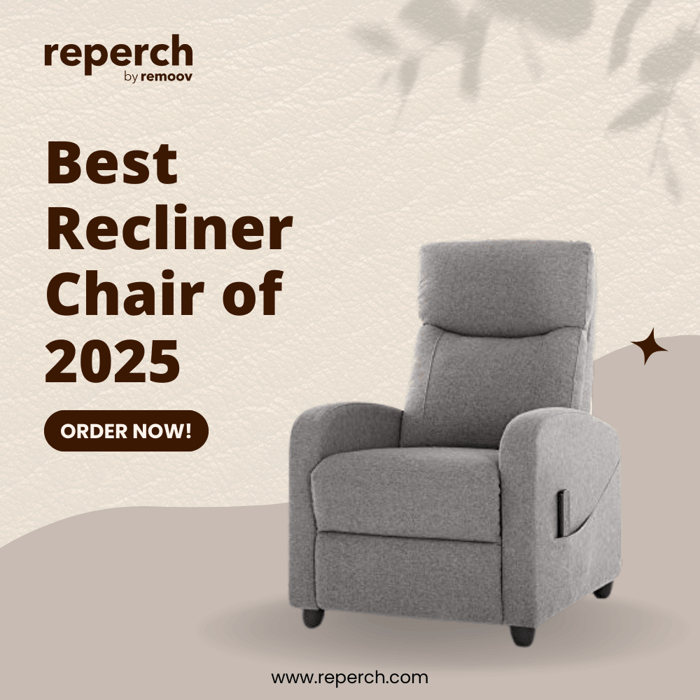Choosing furniture for your home is an exciting yet often overwhelming process. With countless options available, it's easy to get caught up in the appeal of shiny new pieces and trending designs. However, there’s a smarter, more sustainable option gaining traction for all the right reasons: second-hand furniture.
Buying pre-loved pieces is not just about snagging a great deal. It’s a conscious decision that supports environmental conservation, reduces waste, encourages ethical consumption, and builds stronger communities. Let’s explore why second-hand furniture is the smart, sustainable choice you can feel good about.
1. The Environmental Benefits of Buying Used Furniture
Reducing Waste in Landfills
Each year, millions of tons of furniture end up in landfills, contributing to a massive waste problem. Much of this furniture is discarded not because it's unusable, but simply due to changing tastes or minor cosmetic wear. By choosing second-hand, you help extend the life cycle of these items, keeping them out of landfills and giving them a second chance to be loved.
Conserving Natural Resources
New furniture production requires vast amounts of raw materials like wood, water, and metals. Each table or sofa made from virgin resources contributes to deforestation, water waste, and mining activities. Buying second-hand directly reduces the demand for new resources, helping conserve forests, reduce water use, and lessen environmental degradation.
Minimizing Carbon Emissions
The production, packaging, and transportation of new furniture all come with a heavy carbon footprint. Think of the energy used to harvest materials, manufacture items, and ship them globally. By opting for locally sourced second-hand furniture, you bypass much of that carbon output, contributing to a cleaner planet.
2. Second-Hand Furniture Is Often Healthier
Fewer Chemicals in Your Home
Many new furniture items are made with particle board, synthetic glues, and finishes that off-gas volatile organic compounds (VOCs) into your home. These can irritate eyes, skin, and airways, especially for people with sensitivities. Second-hand furniture has had time to release most of these chemicals, making it a safer and healthier choice.
Better Air Quality
A well-ventilated home is crucial for good health, and what you bring into it matters. Pre-owned furniture tends to have lower emissions, which contributes to cleaner indoor air quality and a more comfortable living environment.
3. The Financial Advantage of Buying Used
Significant Cost Savings
Used furniture is almost always more affordable than buying new. You can find high-quality, stylish pieces at a fraction of the retail cost. Whether you're furnishing an entire home or just looking for a standout piece, shopping second-hand lets you stretch your budget further.
Better Value for Quality
In many cases, older furniture is built with superior craftsmanship and durable materials. Solid wood construction, dovetail joints, and hand-carved details are more common in vintage pieces than in mass-produced modern items. You’re often getting better quality for less money.
Opportunity to Upcycle
If you're into DIY projects or creative decor, second-hand furniture gives you the perfect canvas. A fresh coat of paint, new hardware, or custom upholstery can transform a piece and make it truly your own, all while keeping costs low.
4. The Style Benefits: Character and Uniqueness
One-of-a-Kind Finds
Shopping second-hand gives you access to furniture with history, charm, and a unique aesthetic. These pieces often can't be found in big box stores, allowing your home to reflect your personal style and story.
Mixing Eras and Textures
One of the hallmarks of beautiful interior design is the thoughtful mixing of textures and time periods. Vintage chairs can add warmth to a modern dining space. An antique chest of drawers can bring soul to a minimalist bedroom. Used furniture makes it easy to create a home that feels layered, interesting, and curated.
5. Supporting Local and Circular Economies
Boosting the Local Economy
Buying second-hand locally keeps money in your community. Whether you’re shopping from a neighborhood thrift store, a resale boutique, or an independent seller, you're supporting small businesses and helping create local jobs.
Encouraging a Circular Economy
The concept of a circular economy is simple: keep products and materials in use as long as possible. Every time you buy used furniture, you're participating in a system that values reuse and regeneration over waste and excess. It's a step away from fast furniture and towards a more mindful, sustainable lifestyle.
Supporting Charitable Initiatives
Many thrift stores and second-hand furniture outlets are run by nonprofits. When you buy from them, your purchase often supports community programs like housing assistance, job training, or aid for families in need. Your decorating dollars go further when they help others too.
6. Sustainability Meets Social Impact
Making Conscious Consumer Choices
Every purchase is a vote. Choosing second-hand furniture over new tells manufacturers that you value sustainability and quality over convenience and mass production. It’s a form of activism that quietly shapes demand and influences market trends.
Community Building
Shopping second-hand is often more social and community-focused. It can lead you to local markets, vintage fairs, and conversations with sellers who have stories to share. These interactions foster connections and make shopping more meaningful.
7. Getting Started with Second-Hand Shopping
Know Where to Look
Start your search at local thrift stores, estate sales, flea markets, and online platforms like Facebook Marketplace or Craigslist. Furniture outlets and consignment shops also offer curated collections of gently used furniture at great prices.
Shop with a Plan
Measure your space, bring a tape measure, and know what you’re looking for before you go. Snap photos of your current decor to help you visualize how a piece will fit into your home.
Inspect Before You Buy
Look for signs of damage, check the stability of joints, and make sure drawers slide and doors close. Some wear and tear is expected, but you want to avoid major repairs unless you're up for a project.
Think Creatively
Remember that cosmetic flaws can often be fixed. Scratches can be buffed out. Cushions can be reupholstered. Let your imagination lead and don’t be afraid to reinvent a piece to suit your style.
8. A Word About Reperch
At Reperch, we believe second-hand furniture isn't just a smart buy it's a conscious lifestyle choice. Our curated selection of pre-owned pieces reflects our commitment to sustainability, affordability, and timeless design. Whether you're searching for a vintage credenza, a cozy sectional, or a sleek mid-century coffee table, you can feel good knowing your purchase supports both the environment and the local economy. Visit us to explore our latest finds and start building a home that reflects your values.
Choosing second-hand furniture is more than a thrifty decision. It’s a stand for sustainability, a nod to craftsmanship, and a path toward more meaningful consumption. The next time you're decorating or redecorating, remember that the smartest and most stylish option might just be pre-loved.








